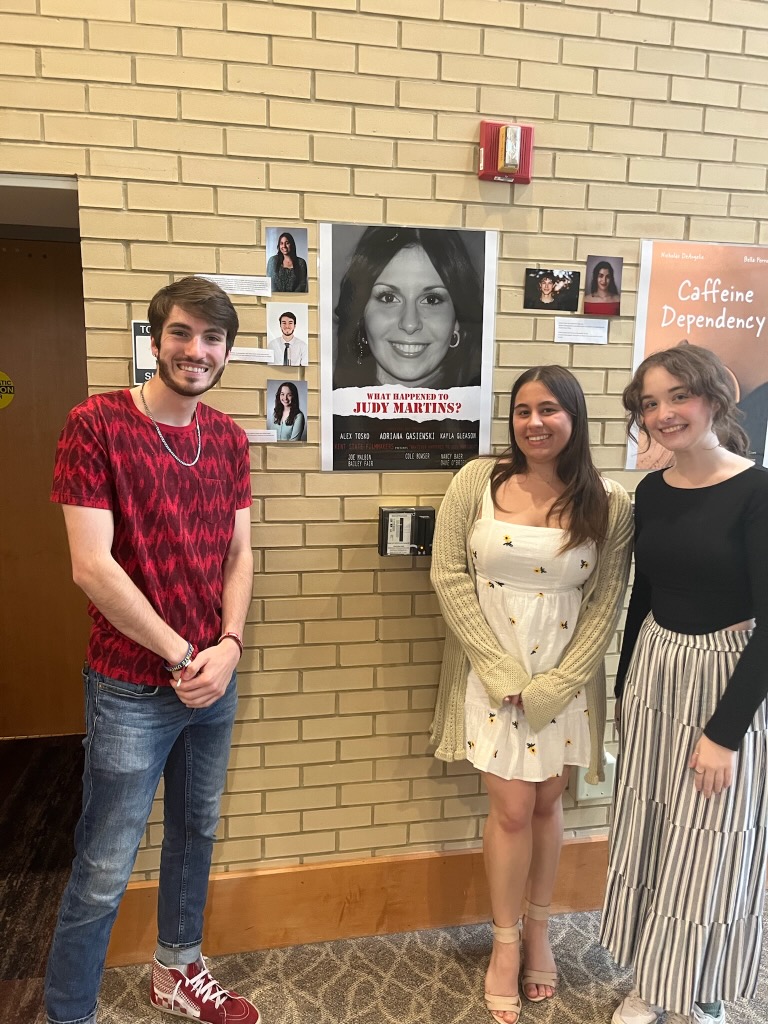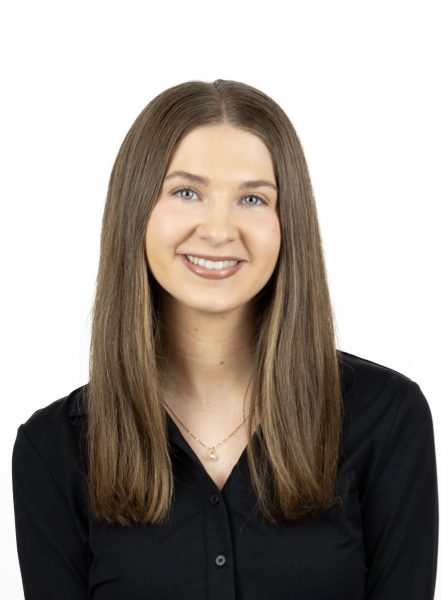A short documentary made by three Kent State students for a class has now been shown on TV, at film festivals and has won awards.
Adriana Gasiewski and Kayla Gleason, senior journalism majors, and Alex Tosko, a senior digital media production major, were enrolled in Documentary and Journalism in Spring 2025. This was the first time the course was being taught, designed to encourage collaboration between journalism and DMP majors.
“Make stories that matter, that was basically our tagline,” journalism professor Jacqueline Marino said.
Marino co-taught the course with Christopher Knoblock, an associate lecturer at the School of Media and Journalism. The class had a total of 58 students.
“We didn’t want any documentary longer than 12 minutes, and they had the whole semester to do it,” Marino said.
A documentary that came out of the course was “What Happened to Judy Martins?” The students behind it are Gasiewski, Gleason and Tosko.
“I thought of Judy’s disappearance … that it would be an interesting subject, because not too much has been done on it before,” Gleason said. “I knew that I wanted to do something not necessarily true crime, but something with a mystery.”
Gleason saw a YouTube video that spoke about Judy Martins’ unsolved disappearance, allegedly occurring on May 24, 1978, after a party when she was walking back from Dunbar Hall to her dorm in Englemen Hall, where she also served as an RA. The 23-year-old student was officially reported missing two days later.
Gleason mentioned the case to Gasiewski, and then they were paired up with Tosko. The process and research for creating the documentary began.
“We found an article by Dave O’Brien and I emailed him and then that kind of spiraled into everything,” Gasiewski said.
O’Brien, a former staff writer at the Record Courier, had been following Martins’ case for years when he began looking into it in 2013. Gleason and Gasiewski found and reached out to family members of Martin’s if they would be willing to be in the documentary.
“With the documentary and our whole planning process, it was a really big deal because Nancy [Judy’s sister] was living in Columbus, so she literally came all the way to Kent just for the interview,” Tosko said.
The class viewed all 18 student-made documentaries in class, while they ranked which ones they would like to watch for their final class presentation. The ones that stood out were notified.
“I remember we got a Canvas message, everyone whose documentary was chosen,” Gasiewski said. “Jacquie [Professor Marino] was basically telling us, ‘Hey, this is open to the public,’ and then I think it had to be the second or last paragraph, she’s like, ‘Also, there will be people from PBS that will be coming to watch.”
Ryan Donchess, the chief content officer for PBS Western Reserve, discovered these documentaries after Marino and Knoblock reached out to him to see if he would be interested in viewing them in the class.
“The class itself really intrigued me because I think that’s a really cool way to go about telling stories when you combine the journalism, research and storytelling abilities with the visual and the audio production skills of digital media production,” Donchess said.
“What Happened to Judy Martins?” premiered on PBS Western Reserve, was a finalist for Foxfire’s first film festival and received first place for Best Student Documentary Short Film. It won awards from the Black Squirrel Entertainment 2025 Film Festival and screened at the Female Film Initiative’s spring showcase.
The documentary is available on YouTube. Gleason’s piece about Martins is on PBS Western Reserve’s website.
The partnership between the different majors was evidently a success.
“They just spent tons of time looking at all of the documentation,” Marino said. “So proud of them. I mean, that really was a tremendous collaboration between two journalism students and one DMP student who did the shooting and the editing and they just worked together so well.”
Out of the other 18 documentaries that were made in class, “Vital Pages,” a documentary about protecting public libraries to keep communities well versed, made it to PBS Western Reserve as well.
Savana Capp, a senior journalism major, James Plested, a senior digital media production major and Katie Waggle, a junior digital media production major, all played a role in creating this documentary in the course.
Capp said when Donchess approached her about the PBS Western Reserve opportunity, she was shocked, and it felt rewarding.
“I feel like this was important to me because I want to show up for the library like the same way that they’ve always shown up for me growing up, and I just also appreciated the opportunity to work with people in a different major than me and kind of see that side of things,” Capp said.
The course will be offered again in Spring 2026 for eligible students, this time with 40 seats available.
For future students, having their documentary premiere on PBS Western Reserve is still a possibility.
“I think it would really speak volumes of the work that’s being done at Kent State, and we’d love to support that,” Donchess said. “And I feel like our audience is going to respond very favorably to that.”
Claire Duber is a reporter. Contact her at [email protected].



